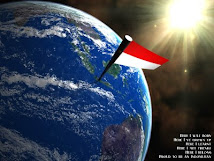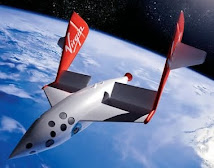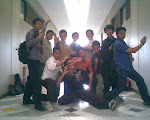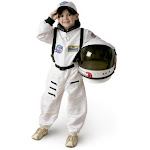Olimpiade Astronomi
I A O
The International Astronomy Olympiad
The International Astronomy Olympiad is a scientific-educating event for students of the junior high school classes - 14-18 years old, which includes an intellectual competition between these students. The style of the problems is aimed at developing the imagination, creativity and independent thinking.
The Olympiad is carried out in the spirit of friendship, tolerance, where the competition is a stimulus for showing the participants' capabilities but contacts, exchange of ideas and collaboration between students, teachers and scientists from various countries have a primary importance. It should be emphasized that the competition at the International Astronomy Olympiad is not the most important part of the programme, in other words the competition with its points, places and Diploma is only a tool but not the purpose of the Olympiad, and the Olympiad is not "selection of the best students" and not "examinations".
IAO takes place each year in the first two months of the astronomical autumn (i.e. September 22 - November 22) in either an observatory, a scientific research centre (town) or at an institute of the participating countries. IAO is organized by the Authorized National Representative (Astronomical) Organization (ANRAO) of the organizing country.
ANRAO of every participating country may send five students, who are the winners of the respective national olympiads or easy competitions: three students for the junior group (14-15 years old) and two students to the senior group (16-18 years old). They are to be accompanied by two team leaders as representatives of each country.
Countries which did not registered their ANRAO may send up to three students: two students for the junior group (14-15 years old) and one student to the senior group (16-18 years old). They are also to be accompanied by two team leaders.
Observers may be at the Olympiad as well.
The Olympiad is intended for students of the adolescent age when the interest to astronomy is being formed most actively. Then preparation for participation is still a useful and purposeful education not yet having turned training into an end in itself. This is a principal idea of the Olympiad.
A considerable part of the knowledge which is necessary for participation in the Olympiad goes beyond the frames of the school curriculum in most of the countries in the world. Preparation for the Olympiad needs extra-curricular activities of various types, whose promoting is one of the Olympiad's aims.
The total amount of knowledge is comparatively not too large and acquiring it is completely within the reach of the students of the above-mentioned age. It is also the age for which the spirit of the Olympiad as an entertaining competition is most appropriate. Involving students of the senior classes would lead to enlarging and complicating the necessary material, which would be senseless. For such students it already turns into a kind of sport and is significantly less useful from an educational point of view. For students 17-20 years old more serious events are preferable like conferences and competitions of research projects.
The International Olympiad is also a meeting of teachers and scientists, where exchange of ideas takes place, methods for refining the astronomical education are discussed and international collaboration in this field is established.
Aims of the IAO
In recognition that:
- astronomy plays a fundamental role in the human progress and will acquire more global importance in the 21 century;
- astronomical knowledge is an important part of the culture of our civilization and an essential factor in forming the view of life and the way of thinking of the young people in the modern world;
The Olympiad sets itself the aims of:
1) Attracting the most talented young people to professional careers in the field of astronomy:
- giving an opportunity for showing their capabilities and encouraging the best students;
- helping the young people in choosing a profession;
- acquainting the participants with the real working conditions and the nature of the research work in the hosting observatory (institute), exchange of ideas and knowledge between astronomers, teachers and students.
2) Spreading astronomical knowledge among as many students as possible and improving the astronomical education:
- provoking an interest in astronomy, physics and astronautics in a greater number of children and young people;
- popularization of natural science and the scientific approach in astronomy and related sciences;
- encouraging teachers to work for improving, enriching and enlarging school astronomy education and including more children in it;
- activating the astronomy education in the junior classes of the high school;
- promoting extracurricular activities in amateur clubs, scientific societies, circles etc.;
- stimulating organization of national astronomical Olympiads in different countries;
- enhancing international contacts in the field of astronomy and physics education in schools.
3) Stimulating the imagination and creativity of children:
- the character of the astronomical tasks enables putting the students in non-standard situations, very close to those of a real scientific research; they can require creating hypotheses, assuming approximations, choosing between a multitude of factors that could be taken into account or neglected, and independent decision about the form of the needed answers;
- the astronomical tasks can set unusual problems for which solving a free way of thinking, fantasy and inventiveness are necessary;
- astronomical tasks allow a variety of completely different, although correct solutions applying different original approaches.
4) Cultivating a spirit of correctness and friendship:
- the International Astronomy Olympiad is a meeting of young people from different countries - future colleagues in the scientific exploration who will have to work in cooperation;
- in the time of the Olympiad favourable conditions are created for active contacts between students, teachers and specialists from the hosting observatory (institute) aimed at an intense exchange of knowledge, education and upbringing of the children during all stages of the event.
History
Competitions for young amateur astronomers, called "Olympiads", are carried out in former USSR for many years. The first attempts to organize a competition in an international (i.e. multilanguage) scale have been done in scientific town of Soviet Academy of Sciences "Chernogolovka" in 1990-1991 as a part of the so called Olympiad of Naukograds and Scientific Centres (NSC Olympiad). Teams of Russia, Moscow, Latvia and Estonia participated. These events provided ground for the future IAO proper.
Positive experience during international olympiads in other natural sciences (Physics, Chemistry, Biology), Mathematics and Informatics led to the idea of starting an International Astronomy Olympiad.
Juridical founding of the International Astronomy Olympiad has been done by Euro-Asian Astronomical Society on June, 7, 1996, as an annual astronomy competition for high-school students.
Immediately after the founding the Olympic Coordinating Council was established.
The first official IAO was held in the Special Astrophysical Observatory of Russian Academy of Sciences in November 1996 as a part of programme of the Autumn Astronomy School for Young Astrophysists. Notwithstanding some initial difficulties, this olympiad was a great success and it was decided to continue with the IAO. In subsequent olympiads the number of participating states increased.
So the Olympiad of Naukograds and Scientific Centres and Autumn Astronomy School of Young Astrophysists in the Special Astrophysical Observatory may be considered as father and mother of the International Astronomy Olympiad.



















